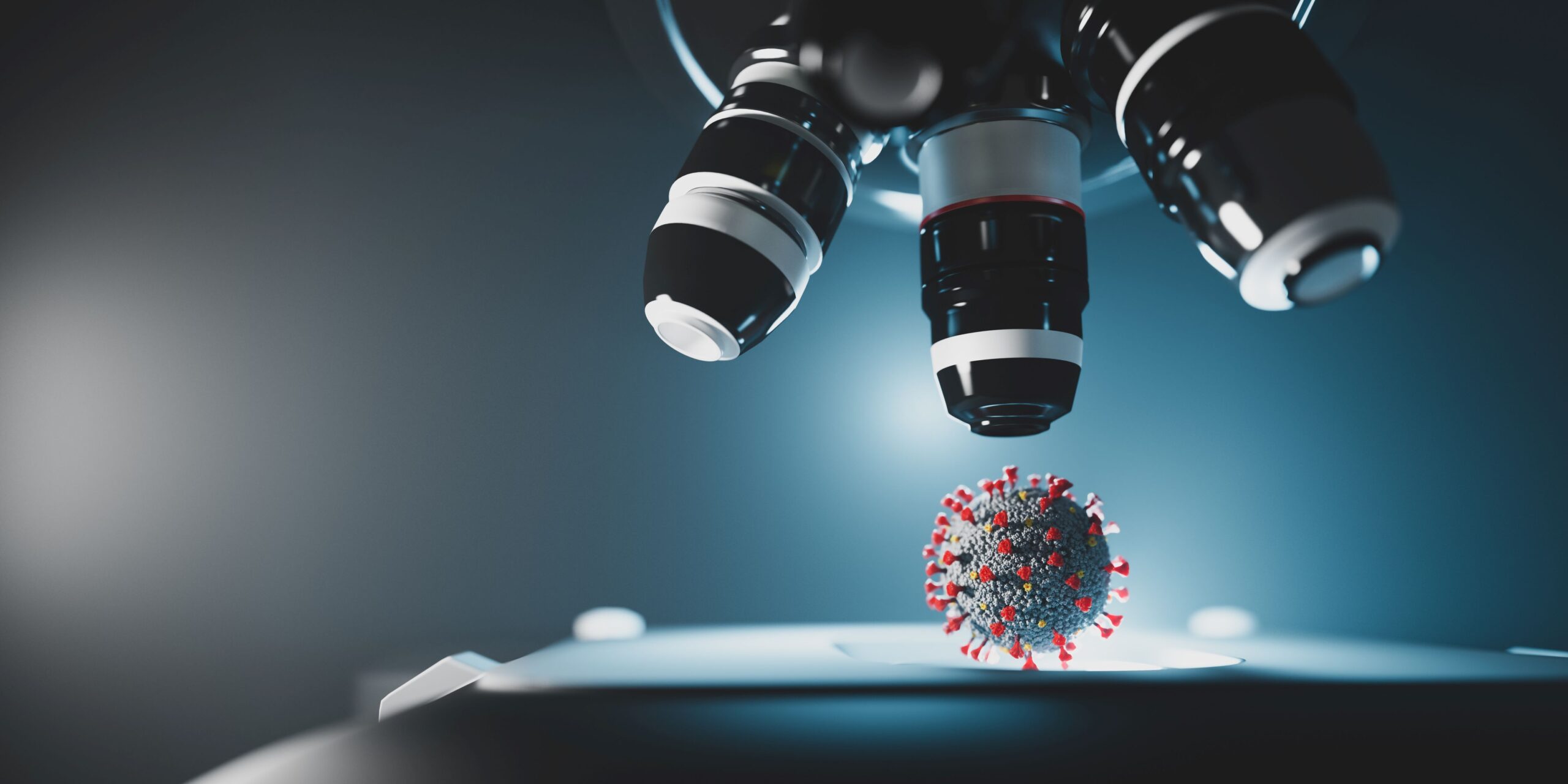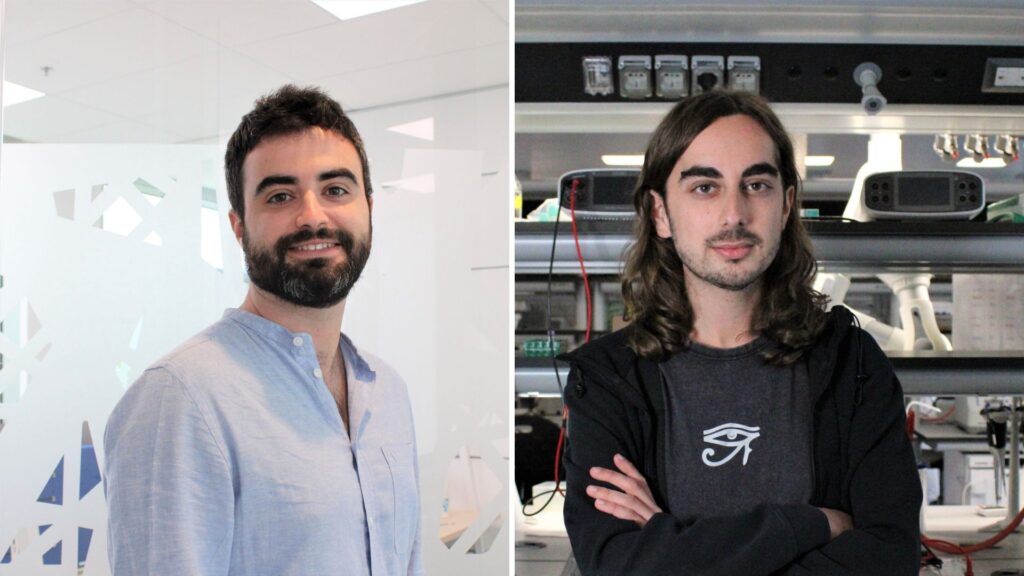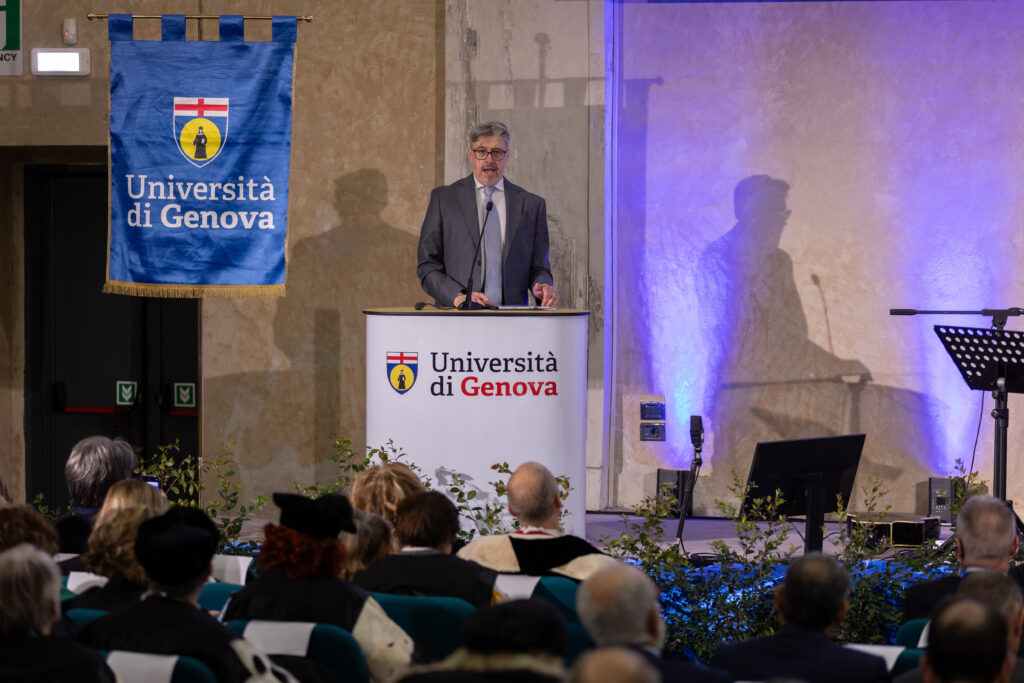COVID-19: How SARS‑CoV‑2 Enters Human Cells

A study by the University of Padua and Human Technopole, together with the University of Milan and the European Institute of Oncology, published in Cell Reports Medicine, reveals that SARS-CoV-2, the virus that causes COVID-19, binds the RAGE receptor present on the surface of specific human immune cells to penetrate them and pathologically alter their function. This study also shows how the involvement of RAGE, previously known only in the context of other pathophysiological conditions, such as obesity and diabetes, is implicated in the degree of severity with which COVID-19 can manifest.
A new route by which the SARS-CoV-2 virus enters monocytes, white blood cells that contribute to the innate immune response, has been discovered: researchers from the University of Padua and Human Technopole have observed that SARS-CoV-2 binds to a receptor on the cell membrane called RAGE (Receptor for Advanced Glycation End Products) and uses it as a key to enter inside the cell. The researchers also observed that patients with higher activation of the RAGE pathway have more severe symptoms and consequences.
The study was published in the scientific journal Cell Reports Medicine. The discovery is the result of a close collaboration between the group coordinated by Prof. Antonella Viola at the Department of Biomedical Sciences at the University of Padua and researchers from Human Technopole coordinated by Prof. Giuseppe Testa, with the support of the European Institute of Oncology and the University of Milan.
The study was based on data from patients hospitalised for COVID-19 during the first phase of the pandemic at the Complex Operative Unit for Infectious Diseases and Tropical Diseases in Padua, led by Dr Anna Maria Cattelan. The research team in Padua isolated and characterised the immune cells from the blood of COVID-19 patients at three different time points during and after the infection, i.e. on admission, at discharge and one month after release.
The analysis continued in Milan, where researchers used technologies to analyse what happens inside a single cell, i.e., looking at the expression of all 20,000 genes encoded by its DNA. The amount of data observed for each patient is comparable to the amount of information in a 140-megapixel image, a resolution at the frontier of the possibilities of commonly available cameras. These ‘photographs’ were taken at multiple points in the patients’ hospital journey, thus exponentially amplifying the amount of data, but above all, the information for each patient on the immune system’s response to SARS-CoV-2.
The analysis showed that the RAGE receptor induces specific alterations in gene regulation, enhancing the inflammatory effect of the virus and contributing to disease exacerbation. Identifying this new mode of interaction between the virus and human cells is crucial for developing targeted therapeutic strategies, mainly to protect individuals at risk of severe complications, such as the elderly or frail individuals. This discovery could lay the foundations for a more targeted and effective approach to counteracting the spread of the virus in these vulnerable groups. For instance, by comparing the characteristic molecular responses detected in the study with those collected in some global databases, scientists also found that the drug Baricitinib, already approved by AIFA in 2021 for the treatment of COVID-19, could potentially reverse the identified harmful effects.
Prof. Antonella Viola, professor of general pathology at the Department of Biomedical Sciences at the University of Padua and corresponding author of the study, explains: ‘When the pandemic started, we immediately got in touch with Prof. Annamaria Cattelan to put our expertise at the service of the community. Together, we studied the immunological characteristics of patients hospitalised in Padua, and this is the latest in a series of results we have obtained and published. The collaboration with Giuseppe Testa’s group and other HT colleagues for this specific study was strategic to identify a new SARS-CoV-2 receptor. Our research, the result of a collaboration between scientists from different fields working in Italy and abroad, shows how little we still know about this virus and how important it is to continue to define the pathogenetic mechanisms of COVID-19”.
Giuseppe Testa, Professor of Molecular Biology at the University of Milan, Head of the Neurogenomics research programme at Human Technopole in agreement with the University of Milan, Group Leader at the European Institute of Oncology and corresponding author of the study declared: “The idea to start studying COVID-19 as part of our social responsibility mission as scientists dates back to March 2020, at the beginning of the pandemic, when I launched the COVIDIAMO project under the aegis of the European initiative LifeTime-for-COVID19 – of which I was coordinator – which applied to COVID-19 the paradigm of high-definition medicine aimed at intercepting disease mechanisms at their first manifestation and then in their course thanks to a high-resolution zoom on how each individual cell modifies its functioning. This study is the result of the work we carried out at Human Technopole and at the European Institute of Oncology, in collaboration with Antonella Viola’s group at the University of Padua, which has made it possible to identify a new mechanism that, in the future may help us to understand why COVID-19 has a worse course in some people than in others. The important role of RAGE was already known to the scientific community as it is linked to several pathophysiological conditions, such as obesity and diabetes, but this is the first time it has been identified as a virus receptor. This discovery demonstrates the power of high resolution driven at the single-cell level and lays the groundwork for a more in-depth analysis of RAGE’s role in infections. It may have translational use in the future in combating certain diseases, although there is no clinical trial yet.”




